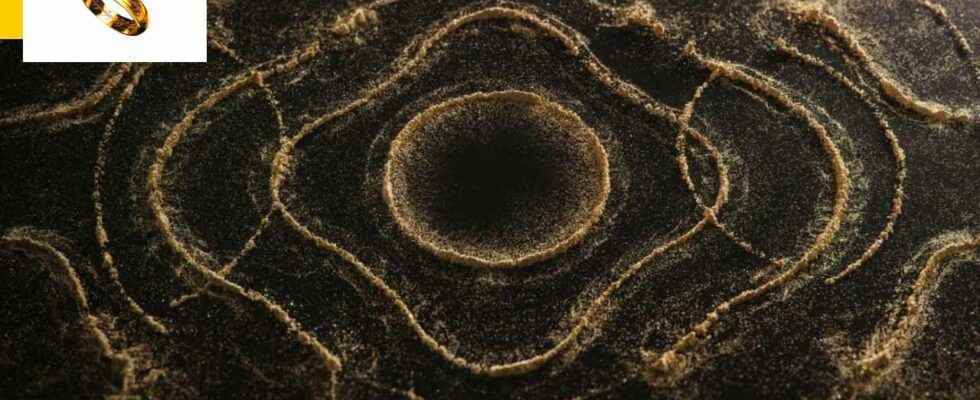Unveiled from the second episode of “Rings of Power” (available on Amazon Prime Video since September 2), the credits of the event series have proven to be enigmatic and mysterious. But what exactly is it referring to?
Cradled by a theme composed by Howard Shore (known for having signed the soundtrack of Peter Jackson’s trilogy) and unveiled at the beginning of episode 2, the credits of the Rings of Power is surprising. If some fans of Tolkien’s work have certainly been able to detect several references to the universe forged by the famous author, other less informed spectators have undoubtedly asked themselves many questions.
What do these strange shapes refer to, modeled to the rhythm of the music by thousands of grains of sand? What major events in Tolkien’s invented story do they relate to? What characters do they evoke? For several days, the theories and analyzes of this enigmatic introduction have been multiplying.
As explained a particularly well detailed article from the Screenrant sitethe credits of the Rings of Power – by its form and its composition – seem to represent a quite precise episode of the mythology of Tolkien: the first of all, called theAinulindaleand which corresponds to the creation of the world by Eru Ilùvatar.
At the very beginning of Silmarillion, this creator – who can be seen as a representation of God according to the Catholic that Tolkien was – shapes the world thanks to the great music that he himself inspired in the Ainur, the first beings he created . It is therefore from their song, and from this perfect harmony, that the world was born.
The universe modeled by musical notes: an idea that we find visually transposed in the credits of the series, where the shapes that gradually take shape in the sand seem sculpted by the melody of the main theme.
These forms, moreover, may suggest several other constituent elements of Tolkien’s work…
The 9 rings of men
Amazon Prime Video
Given the title of the series, the first motif that appears in the credits most likely refers to the poisoned gifts offered by Sauron to nine Men. This ruse was actually aimed at corrupting them and transforming them into specters: the famous Nazgûls. The ring which is in the center of the 8 others undoubtedly corresponds to that of the Witch-King of Angmar, the most powerful of them.
Telperion and Laurelin
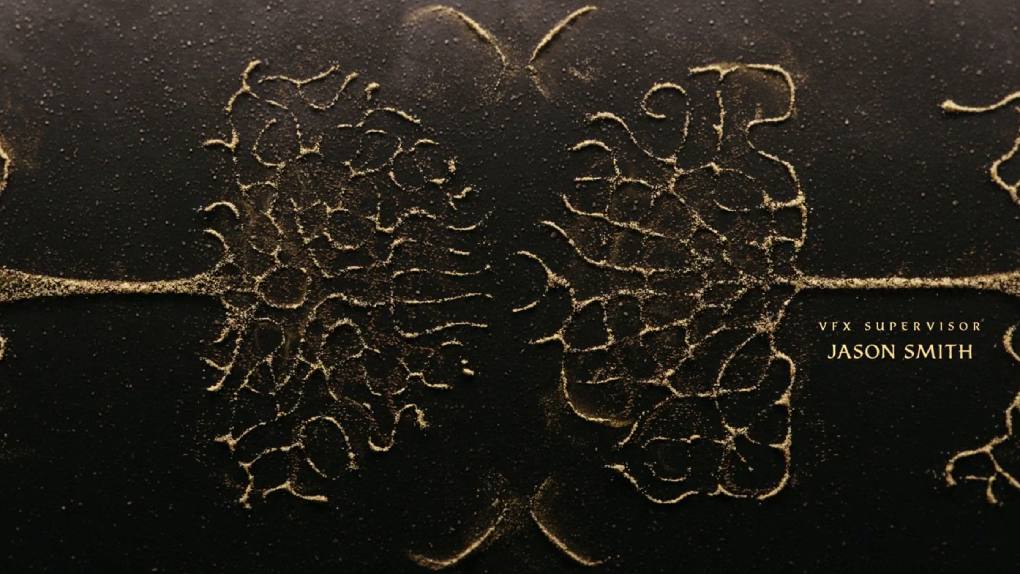
Amazon Prime Video
In the Silmarillion they will eventually disappear, destroyed by the spider Ungoliant at the call of Morgoth: a rebellious Ainur who has chosen the path of evil, thus turning away from Ilùvatar.
Fëanor’s Symbol
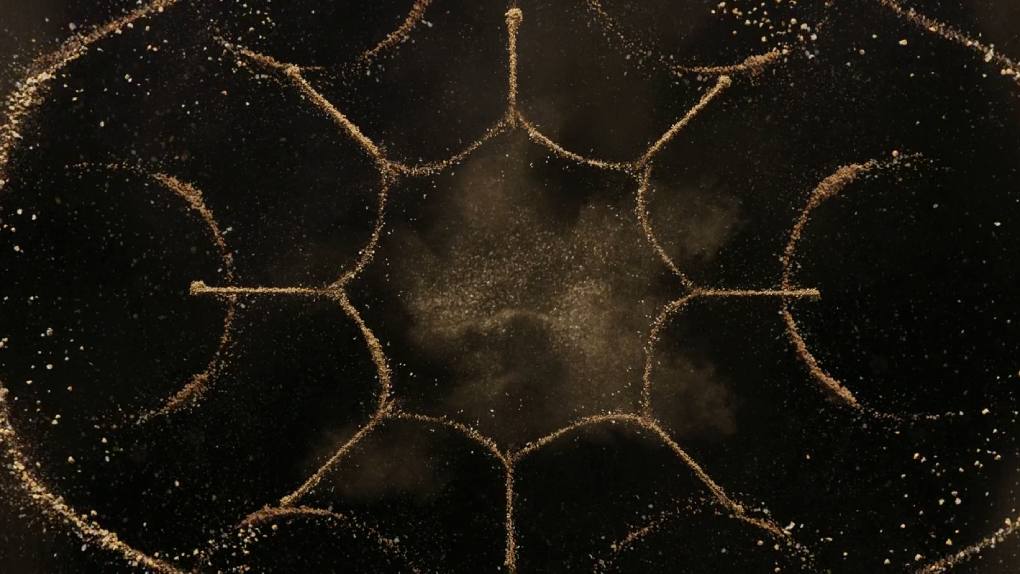
Amazon Prime Video
Known as the greatest blacksmith on Earth, he is most famous for having created the Silmarils from the light emitted by the two trees of Valinor. Although he disappeared long before the events described in Rings of Powerwe can see his illustrious hammer in episode 2.
The Arrival of Evil
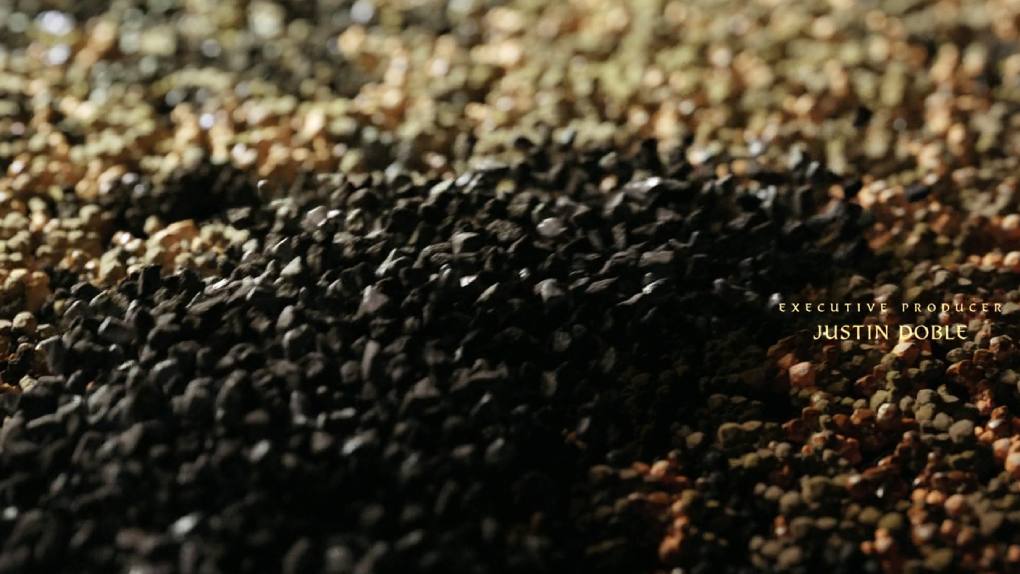
Amazon Prime Video
discordant music
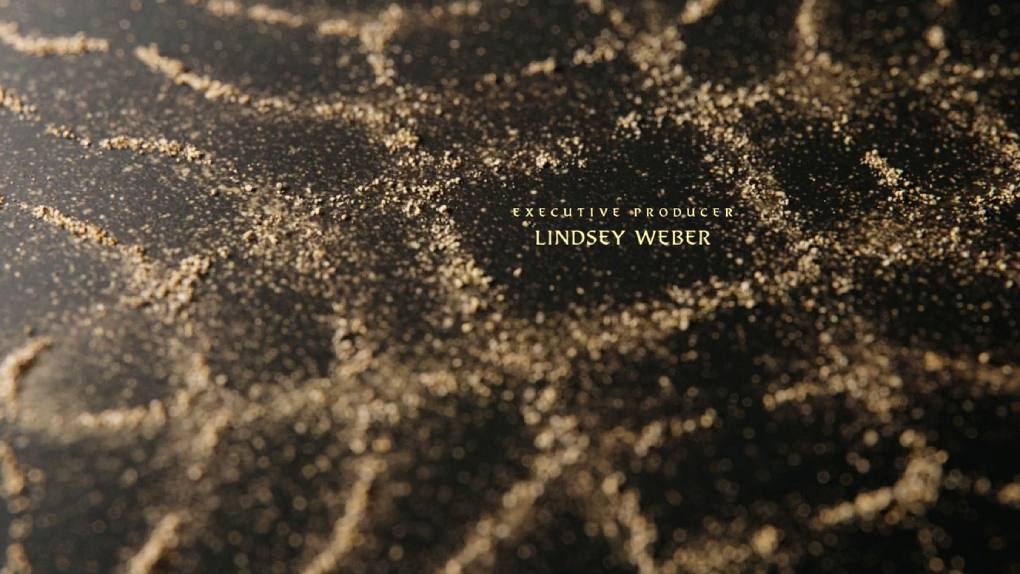
Amazon Prime Video
This phenomenon very probably represents the evil intervention of Melkor (or Morgoth) among the Music of the Ainurs: a dissonant, repetitive incursion, independent of Ilùvatar’s project, and whose rhythm came to disturb the original melody.
The One Ring
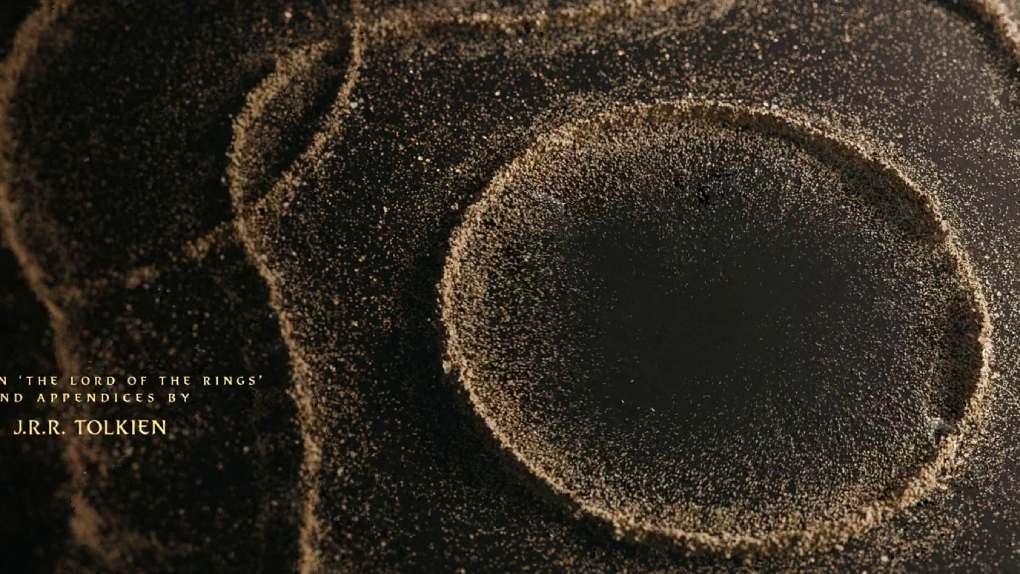
Amazon Prime Video
Depicted as both Sauron’s ward and some sort of unfathomable abyss, he appears last in the series credits.
